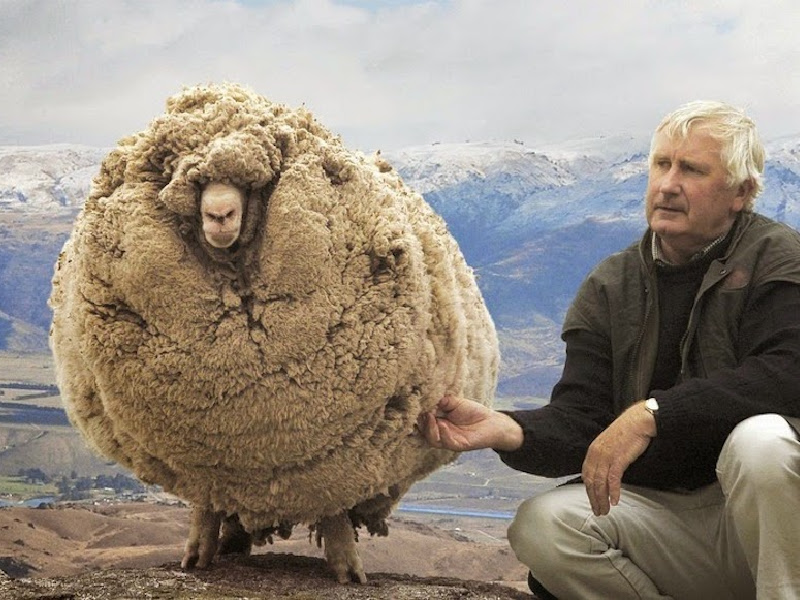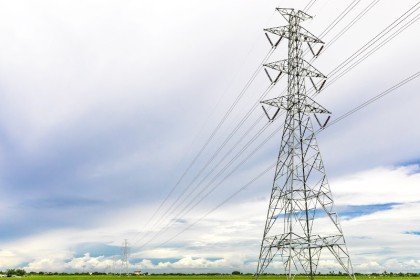
Mitigation Of Risk For Sheep Farmers
“As fewer people farm, more are disconnected from food production, and they have a poor understanding of what farmers actually do. I spend as much time in front of a computer analyzing yield data and commodity prices as I do driving a tractor. And I don’t wear overalls!" - Daniel Kelly
The world has changed, this is certain. As a legitimate and serious business, farming deserves more careful attention to be paid to the critical and creative thinking skills required to navigate successfully through the economy, and business-unfriendly legislation. Most importantly, farmers need strategic foresight in order to be able to mitigate and manage risks, and to develop innovative solutions to these risks. In many respects, Agriculture in general, and Farming in particular, are peculiar sectors of the economy. ‘Farming’, as the productive source of food and other useful crops, represents the first combination of processes to face and have to solve diverse challenges, as well as to manage and mitigate (versag) countless threats, many of which present the farmer with existential risks (bestaans risikos). In Part One of this series of articles, I will discuss farming as a ‘pioneering venture’, then consider some of the less obvious risks facing sheep farmers in particular. Many of the risks faced everyday by farmers, threaten the very existence of farms as going concerns together with the livelihood of entire farming communities. This permanent state of pioneering, of being at the frontier of food production, is what makes the business of farming uniquely peculiar and high risk.
Farming is a front-line business in the sense that it alone has to mitigate and manage the most serious risks encountered through the total value chain of the production of food products and many other products used in commerce and industry. For example, consider the significant difference in the nature, scope and scale of security risks faced by a retail butchery compared to those of the farmer growing the meat, and the lengths and costs to which the farmer has to go, to mitigate the security risks on his farm. This state of being, these facts about the business of farming, is what makes the mitigation of risks a worthwhile subject for continued discussion, critical thought and serious consideration. However the farmer’s attention and application must not end with the mitigation of risk, but rather he should persevere with the testing of innovative solutions which might resolve or reduce the pressures exerted by these risks on his farming operation.
From my discussions, readings and research it is clear that the failure of a farmer to adequately prepare for, and reduce the potential impact of identified, key existential risks, far outweighs any possible benefits which would accrue from the correct positioning or preparation for most farming opportunities. For example, the benefits of improved farm security and reduced predation brought about by better fencing and physical patrols, will quickly be undone if water security is compromised, or if firebreaks prove to be ineffective or insufficient. In other words, the devastating costs of widespread, uncontrolled fire or loss of access to water, as examples of priority, existential risks, will undoubtedly negate the benefits of many quality decisions in areas which expose the farm and the farmer to lesser degrees of risk. The prioritizing, mitigation and management of risks, coupled with the search for innovative solutions to these risks, must be considered to be a primary skill and discipline for farmers. Let me now turn my focus to the risks coupled with a specific farming model, free-range sheep farming, either for wool or mutton.
As with any private sector business, the primary objective of the sheep farmer is to firstly make a profit, and then to improve efficiencies and grow the operation so as to maximize these profits, all of this with a focus on sustainability. Simply stated, he needs to sell the mutton or wool he grows for a higher price than his total cost of production including risk mitigation costs, legislated taxes, and a margin which rewards him for the risks he has taken. Losses in a business come about when the owner/management team and staff are unable, unwilling, unskilled, ignorant of, or are unprepared to mitigate and manage the risks facing, or being encountered by the business. For farmers, and specifically sheep farmers, these risks include the following less obvious examples:
- Compromised or absent immunity to seasonal parasites, either drought/dry condition organisms or those prevalent during wetter seasons. Consider a current production flock, born in the Camdeboo in 2020 during serious drought conditions to ewes which had also mostly experienced drought through their lives. The immunity of this flock will tend to protect it mostly against dry-weather parasites as these will have been all they had to deal with, as did their parent ewes. With the drought having broken in 2023, the second-generation ewes of this flock, when they lamb, will produce offspring with relatively poor resistance to wet-weather parasites. If no risk mitigation strategies are put in place by the farmer, the mortality rate of these immune-compromised lambs could reach critical levels in the first year due to infection by wet-weather parasites against which they will have inherited little or no immunity or resistance.
- Changes in consumer buying patterns, unexpected or anticipated, both present risks to the farmer which are difficult to mitigate against in the short and medium term, as these most often require changes to farming practice, re-education and always a high degree of innovation. Consider for example how the Vegetarian Movement of the past thirty years has impacted the consumption of animal protein in general and red meat in particular.
- Infestation of introduced and exotic, noxious plants, especially the various cacti varieties, with the associated impacts on grazing, carrying capacity, water usage, animal health, not to mention relationships with neighbours.
- Inadvertent and unforeseen introduction of inferior quality genes into the productive flock through artificial insemination programmes, using unverified sperm.
- Too narrow a view on the impact of legislative costs, including taxes and fees, veterinary and other animal health and safety requirements and costs on the production value chain and cycles.
- Poor or absent estate planning for the inheritance of the farm. Too often the commercial viability of the inherited farm is compromised due to the dilution of the estate’s capital base, division of the total hectares available, in-fighting among beneficiaries, and the payment by beneficiaries of onerous estate duties and other legal fees.
- So-called ‘Black Swan’ events such as is now happening in many Karoo farming districts with the erection of wind-farms and the building of facilities for the casting of the cement platforms for the turbines, and other required infrastructure. Over the next decade, although there is a relatively low level risk of massive pollution by cement dust in the day-to-day operations of the precast concrete facility, there is still a real risk that, due to human error, equipment failure, accidents etc., toxic cement dust could be blown from these sites onto the surrounding grazing land and will find its way into the water sources and the water table of the Karoo. It is imperative that all transfer of materials is fully shielded and that safety and maintenance protocols are diligently followed. Ongoing interest in both fracking and the mining of manganese ore remain potential ‘Black Swan’ events, albeit in the wings!
- Volatility of the differential within the grading metric of mutton and lamb prices. Consider that the producer price of A2/A3 grade mutton in Q1 of 2017 was R58.60, with that grade now receiving R82.40, an increase of almost 41% over the 7 years, whereas AB2 grade for the same period increased by 35%, with C2/C3 also increasing in price by almost 40%. Furthermore, the continued aggressive support of imported mutton, by many of the role-players in the industry, as well as the ‘dumping’ of foreign-sourced wool, mutton and lamb, priced well below the local production prices, contributes significantly to price insecurity for local farmers.
More obvious risks include:
- water scarcity, quality, security and accessibility,
- physical, personal and household security risks,
- veld fires,
- expropriation and/or illegal occupation of farm land,
- poor timing, either too late or too early, of a lambing season or shearing cycles,
- inferior quality, damaged, absent or inadequate fencing and other security measures,
- persistent lack of genetic diversity in production flocks,
- the impact of our weak currency (ZAR) especially with regards to imported medications, other preparations required for animal healthcare, and fuel costs,
- parasite resistance to administered synthetic medications and preparations,
- inferior time management around key functions and risks resulting in not all important ‘bases’ and priorities being addressed,
- poor or non-existent administration, accounting, record keeping, and the tracking of the statistics of the farming operations. Consider the challenges of successfully lambing with ewes carrying the genes for twins and triplets. These will be known to experienced farmers but not to the novice. However if careful record keeping, day-books of notes, and statistics of the flock have been maintained, the novice farmer will have access to data, information, knowledge and wisdom which could empower him to put in place risk mitigation strategies and practices to ensure the high survival rates of his twins and triplets.
- lack of knowledge of broad economic principles and measures, including market supply and demand metrics ahead of changes in consumption trends, and
- gaps in the farmer’s knowledge of the carrying capacity of his veld as impacted on by grass varieties being used or newly introduced, encroachment of invasive vegetation, predation patterns and densities, grazing by competitor, wild herbivores, the impact of seasonal insect populations on the grazing, the long-term negative impacts of pesticides and herbicides on grazing vegetation, water sources and toxicity levels in the sheep, the extent of soil erosion caused by wind, water, and poor land management.
Conclusion
The unique peculiarity of Farming as a business model, positioned at the frontier of all risks faced in the production of food and many other products useful in industry and commerce, results in the critical importance of strategies for mitigation of risks, and the discovery of innovative plans for the resolution of these risks. Existential risks to farming communities, farms as businesses, and the sheep flocks as production units, are the highest order of the profile of risks faced by farmers. In this series of articles, I will discuss the need for continued and sustained attention to be paid to the creation or discovery, and testing of possible innovative solutions aimed at resolving the risks faced by farmers. I will expand on how innovation lies at the heart of a matrix consisting on the overlay of the sheep farming value chain with the key risks associated with each of the elements of production.
If you would like to communicate directly with the author, you are invited to contact PJ at the following email address: gardenroutesawmills@gmail.com
PJ Mommsen












